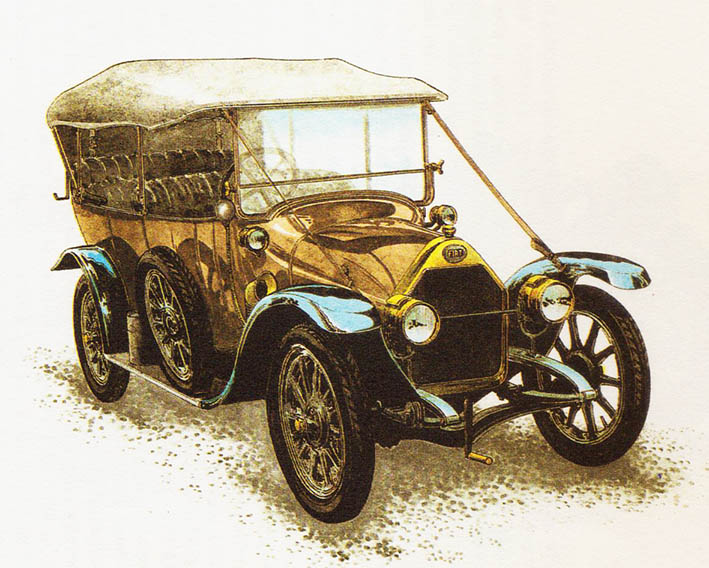FIAT-ZERO – year 1912
Manufacturer : Fiat S.. A., Turin, Italy
Even before the First World War, following the example of H.. Ford from Detroit, mass production of cars began in Europe. The Fiat company did not remain on the sidelines. W 1910 r. prototypes of the Fiat-Zero car were shown on the streets of Turin. They appeared on the market only in 1912., when assembly tapes adapted to the needs of mass production were already working at full speed.

Fiat-Zero started to be produced after the “1″, however, it was given a designation before one, that is, zero. This model thanks to its power, reliability, high durability and low price was received very favorably by users. It had a 4-cylinder engine with power 11 kW (15 KM). With the diameter of the cylinders 70 mm and piston stroke 1 20 mm had a displacement 1846 cm3. The drive to the rear axle was transmitted via a 4-speed gearbox via a drive shaft. The classic frame was sprung at the front with semi-ellipticals, and at the rear with quarter-elliptical longitudinal springs. The first models were made with a torpedo-type body. It was selling for less than 8000 lira. Do 1915 r. made 2041 pieces of this model.
The prerequisite for the successful series production of cars was the thorough standardization of all materials used, as well as finished parts. Thanks to the standardization used in this model, the number of steel grades used here has decreased by a third, out of a thousand metal tubes only were used 36, only out of several hundred bearings were selected 52. Standardization also simplified procurement, parts storage and assembly.
W 1915 r. an improved version of Fiat-Zero was released, with a stronger engine developing power 14 kW (19 KM) by 2000 RPM. The car already had an electrical installation. On the mass 900 kg was developing a maximum speed 62 km/h. At the customer's request, the company supplied the chassis, on which a spider or landaulet could be mounted. The serial use of the windscreen has become a novelty. Until then, drivers considered the windshield unnecessary and dangerous, because in nice weather it disturbed, and in the rain it blocked the view.